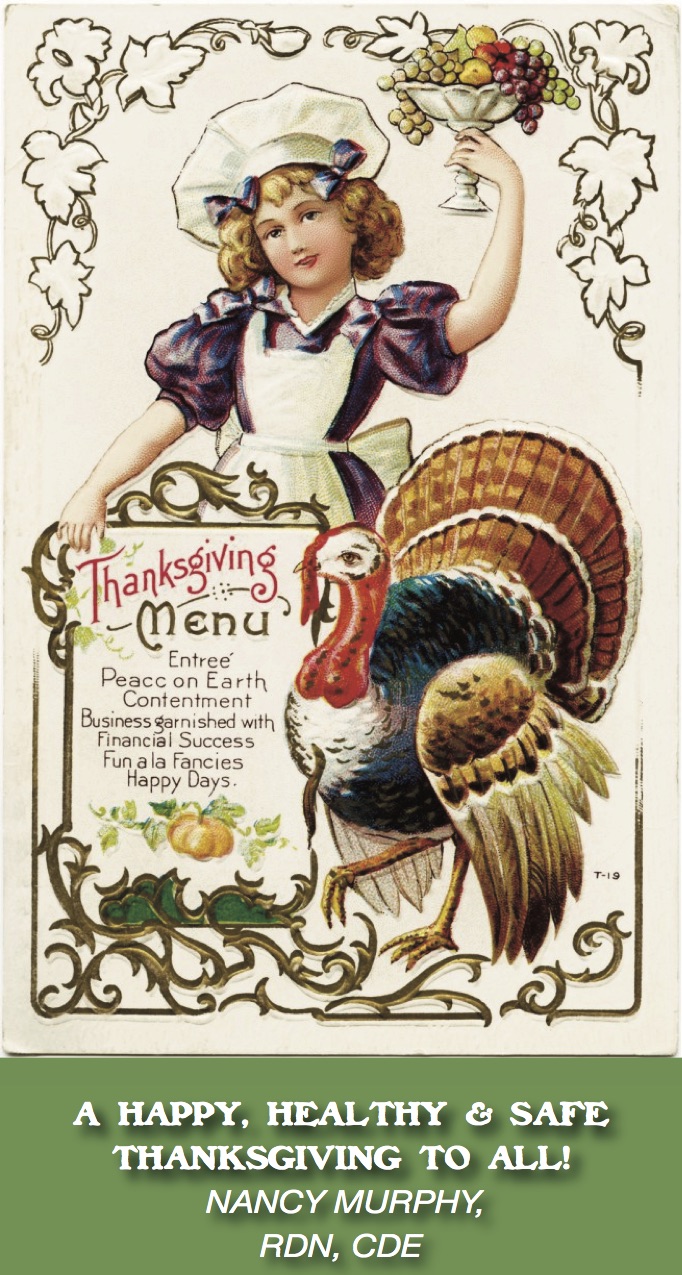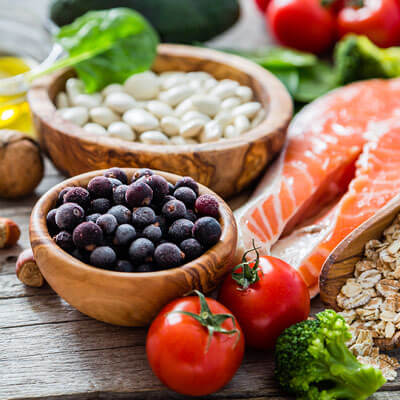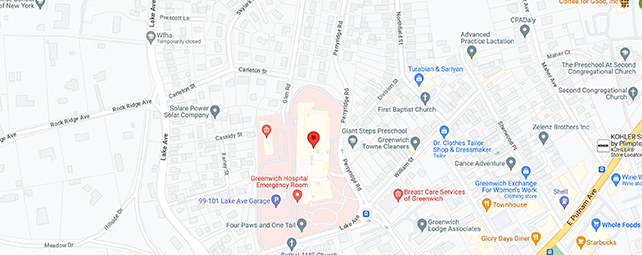
Perhaps it is no coincidence that the word tradition has the sound “DISH” in it. While many of us are willing to update long-standing traditions to make them more acceptable to the next generation, family, friends, and patients seem particularly resistant to modifying or updating their holiday dishes. The mere suggestion that a traditional recipe be omitted from the menu or modified in any way can bring tears to their eyes. As bariatric patients, you have committed to making significant changes in what and how you eat so it follows that advocating for healthy changes in some of your food-related traditions might be helpful in (1) achieving your personal weight loss goals and (2) in helping the youth of your families stay leaner and healthier. Here are 10 WAYS TO “TRIM THE FAT” from your Thanksgiving table (and your waistline) this holiday:
1. START YOUR MEAL WITH A FEW HIGH PROTEIN “LIGHT BITES:
Instead of high–fat appetizers like cheese, nuts and chips w/sour cream- based dips, try lighter options like shrimp cocktail, veggies w/non-fat Greek yogurt-based dips, deviled eggs made with light mayonnaise or a smoked salmon platter. You and your guests will benefit by not filling up on carb and fat calories before your main meal. As bariatric patients, if you choose to eat some appetizers, eat them very sparingly or they will be your main meal.
2. REDUCED PORTIONS FOR ALL:
As bariatric patients, you must reduce your portions to accommodate your new pouch or sleeve size. As concerned relatives, spouses or friends, consider reducing everyone’s portions by simply cooking less. Focus on quality of food purchased more than quantity prepared. If you are hosting 10 people, cook for 12, not 20. It will be easier on the purse and you will have fewer leftovers to deal with at the end of the day.
3. TALK TURKEY:
If you find that cooking a whole turkey results in either a lot of waste, family fights over various turkey parts or that crispy turkey skin creates too great a temptation, consider other options like buying a turkey breast, turkey cutlets or separate turkey parts. I have recently discovered something called a “flank steak cut of turkey breast” which is 100% breast meat and can be easily marinated and grilled like a beef flank steak (but with less fat and no waste).
4. DON’T GET OVERSTUFFED ON STUFFING, ETC.:
Please beware of bread-based stuffing, macaroni and cheese and other noodle or bread-based casseroles. They tend to be very dense and what seems like an innocent bite can expand upon entering your pouch or sleeve. (Many a meal has been abruptly ended by a mere taste of “grandma’s recipe” which caused a blockage or left someone feeling overstuffed.) Try to serve some lighter, more nutritious starch options like winter squash (acorn, butternut, hubbard, etc. have half the carbs/serving of potatoes, yams, rice, etc.), turnips (only 15 calories and 4 grams of carb per ½ cup!), rutabagas (only 30 calories and 7 grams carbs per ½ cup!), mashed cauliflower (instead of, or mixed with white potatoes) or quinoa (a high protein grain-like seed that is prepared like rice and other grains).
5. MOISTEN FOOD WITHOUT THE FAT:
Use low sodium broth, low-fat buttermilk, fat-free creamer, creamy low-fat milk (like Simply Smart, etc.). and low-fat shredded cheese to moisten or flavor dishes that generally require large amounts of butter,, cream and whole milk, or full-fat cheese. Done properly, you will retain the moistness and flavor of your mashed potatoes, yams, etc. with a whole lot less fat. If you are not sure how to substitute or modify a recipe, look to a website like Cooking- light.com where you enter your ingredient in the recipe finder and get a list of healthful and delicious recipes containing that ingredient. The November editions of Cooking Light, Clean Eating and Eating will also always have a beautiful selection of modified Thanks- giving recipe classics.
6. EAT WITH YOUR GUESTS:
Even if you filled up on some “light” appetizers and are too full to eat the main course, try to sit down for 30 minutes to enjoy the social aspect of your holiday meal with your guests. It is sometimes an interesting exercise to watch others overeat when you are not interested in eating. If you feel hungry or plan to eat the entree, try not to taste and pick while you are serving as you may end up feeling full but unsatisfied. Foods eaten in a rushed and mindless manner may not sit well. Try to abide as closely to your “bariatric dining rules” as possible by (1) not washing your food down with a beverage, (2) eating slowly (GOBBLING is for turkeys!), (3) chewing your food very well and (4) stopping your meal at the very first signs of fullness. An enjoyable meal is one that ends with you feeling well.
7. THINK BEFORE YOU DRINK:
If you choose to have an alcoholic beverage either before or with your holiday meal, please remember the following; (1) drinking on an empty “pouch” or “sleeve” may cause rapid alcohol absorption and intoxication which can quickly spoil your holiday meal (particularly in GB and VSG patients), (2) excess alcohol consumption can lead to dehydration and (over time) gastric irritation and ulcers, (3) drinks made with sweet mixers like fruit juice, fruit puree, soda or tonic water can lead to dumping synsyndrome (GB patients) or discomfort from carbonation (all bariatric patients) and (4) while eating and drinking at the same meal is routinely discouraged (for fear of stretching your pouch or sleeve it is best to have some food in you before sipping on a sugar- free, non-carbonated cocktail (like dry wine). You may choose to slowly sip it with your meal or shortly after you have eaten a few light appetizers.
8. A SWEET ENDING TO YOUR MEAL:
If sweets were a weakness in your past and you are hosting the holiday, consider assigning someone else to take charge of dessert while you make coffee or put your feet up in another room. If you are a guest, try to move out of dessert range and/or sip very slowly on a hot or cold beverage. If you are inclined to make a sugar-free/low-fat dessert, stick with simple items like pudding, mousse, baked apples or poached pears that don’t require a lot of fatty components like crust, cream fillings, etc.
9. AND LEFTOVERS FOR ALL?:
If you followed suggestion (2) and prepare the right amount of food this year, leftovers may not be an issue. If not, or if you enjoy leftovers, be sure to have all size containers on hand. Provide guests with family size containers of food and fill up smaller single serving containers to refrigerate or freeze for yourself. It is much harder to overeat when you have a 2 oz. container “talking” to you. Awareness and accountability are always heightened when food has been pre-measured.
10. WALK THE WALK:
Since chances are good that your holiday calorie intake might be a bit higher than usual, find time to fit in your exercise. Take 30 minutes to walk outside or on the treadmill, go for a bike ride, etc. before you get involved in your holiday cooking or do a few laps around the block while something is cooking. If that is not possible, encourage guests to go for a pre-dessert walk with you. (You will feel so much better for it!) If you are not cooking, there is almost no reason not to go for a walk, jog in a Turkey Trot in your town, do the Wii Fit or engage in some other calorie burning activity. Remember that 30-45 minutes of cardio exercise will help boost your metabolism (and the way you burn and store calories) for 14-16 hours post-exercise. That sounds like a great deal to me!

















